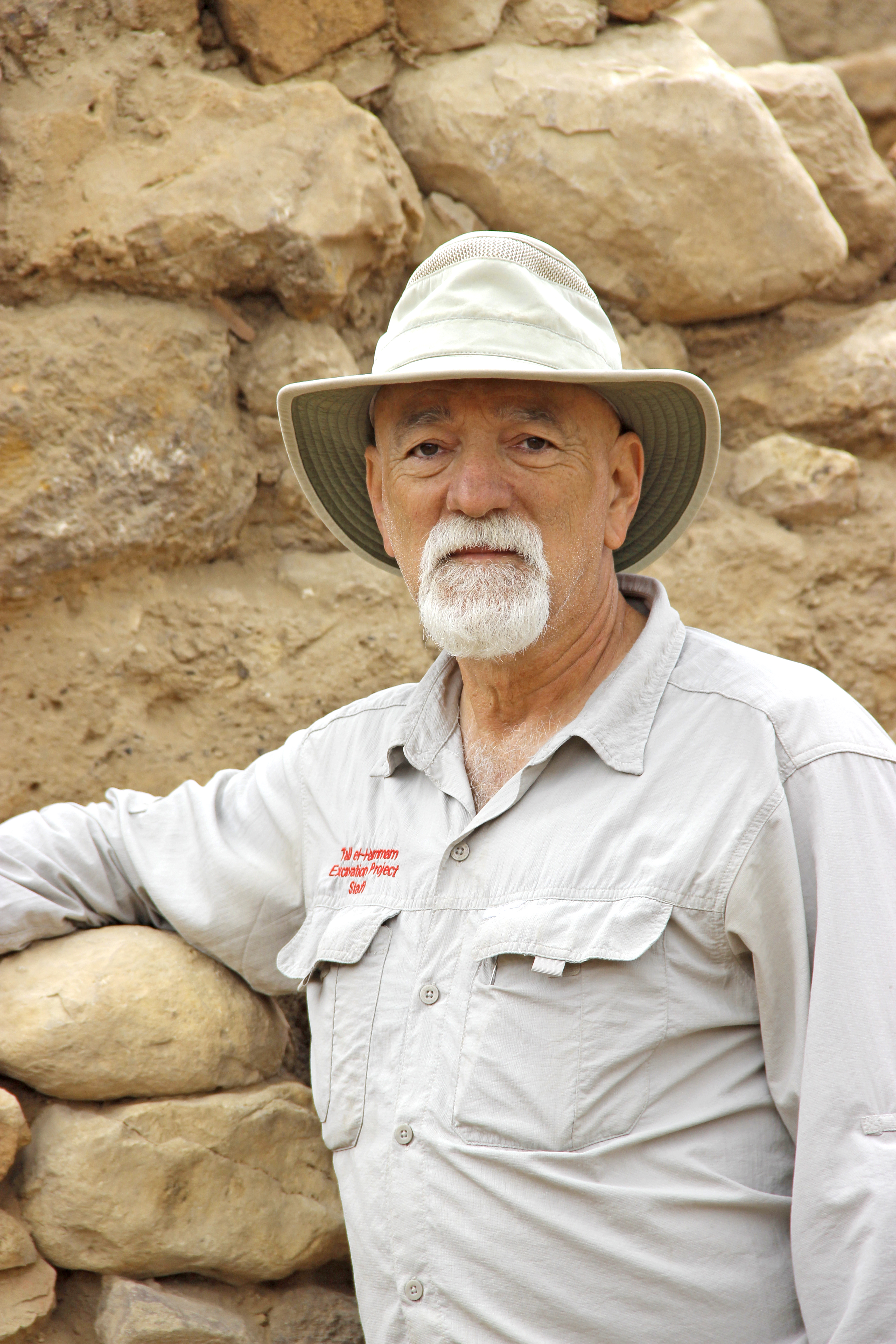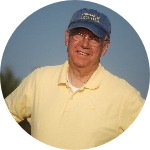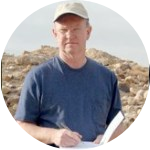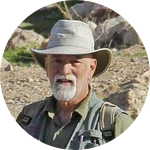Project Results
The goal of the "Fire-from-the-Sky" research project was to search for additional evidence of a meteoritic airburst over the north end of the Dead Sea ca. 1700 BC which is thought to be the cause of the end of the Middle Bronze Age occupying civilization. The primary method of data collection was a walking survey of the many wadis that traverse the southeastern quadrant of the circular plain immediately north of the Dead Sea. Analysis of the materials collected is required before conclusions regarding the airburst hypothesis can be drawn.
About This Project
This project will test the hypothesis that a cosmic airburst brought a sudden and catastrophic end to the formerly thriving Middle Bronze Age civilization that occupied the region immediately to the north of the Dead Sea. I will be collecting soil samples from the eastern Jordan River Valley which will be analyzed by collaborators back in the USA for meteoritic content and evidence of extreme thermal exposure.
Ask the Scientists
Join The DiscussionWhat is the context of this research?
My doctoral dissertation on "The Middle Bronze Age Civilization-Ending Destruction of the Middle Ghor" documented the existence and demise of a formerly thriving civilization occupying the broad alluvial plain at the north end of the Dead Sea. Microscopic analysis of the material evidence (ash & soil samples, vitrified pottery sherds and melt rocks) gathered during my initial research effort suggested that the mechanism of destruction was a cosmic airburst. Chemical analysis of soil samples indicated a simultaneous poisoning of the soil with Dead Sea salts that prevented resettlement of the area for 6-7 centuries. Publication of the preliminary analyses and findings is forthcoming in collaboration with the team of scientists and researchers assisting me back in the United States.
What is the significance of this project?
The existence of a thriving civilization in the broad alluvial plain of the southern Jordan River Valley during the Early and Middle Bronze Ages was previously unrecognized by scholars. That it came to a catastrophic end ca. 1700 BC was also unknown. The next occupying civilization, which most scholars assumed to be the initial occupants, appeared during the Iron Age, ca. 950 BC. My preliminary research suggests both a destruction mechanism (fire from the sky in the form of a cosmic airburst) and a reason for the extended occupational hiatus (poisoning of the soil with Dead Sea salts). This project tests the hypothesis of the destruction mechanism by comparing soil evidence with the analytical results of the Younger Dryas cosmic event (see Additional Information, below, for references).
What are the goals of the project?
This is a 2-phased effort. This project is Phase 1, with the specific goal of collecting soil samples from the southern half of the Transjordan plain and shipping those samples back to collaborating scientists and researchers in the United States. Phase 2 is the analysis of the samples (to be funded separately) and will include, but not be limited to, examination using Scanning Electron Microscopy (SEM), chemical and elemental analysis, and carbon-14 dating. The results of the Phase 2 analysis will either strengthen the hypothesis of a cosmic airburst event ca. 1700 BC or suggest refinement or further avenues of investigation.
Budget
An extended period of time (4 months) is required to traverse the region of interest on foot and collect soil samples. Ground transportation includes car + driver/interpreter for an estimated 14 excursions into the field. Samples collected each week will be pre-processed and refined to reduce bulk and then shipped back to collaborators in the USA for analysis using scanning electron microscopy (SEM) and other methodologies. My wife will accompany me as a research assistant and share accommodations.
Endorsed by
Meet the Team
Affiliates
Team Bio
The materials analysis team supporting me in this project formed while I was working on the initial research for my doctoral dissertation. They are active and retired academicians, scholars, scientists and engineers from multiple universities, industry, and government research laboratories. The thread that binds us together is our common interest with investigating cosmic airburst and impact events. Those listed as collaborators on this current effort are only representative of the entire team.
Phil Silvia
I am the project lead and will be collecting the soil samples in Jordan. I am a retired engineer and technical program manager, pastor and police chaplain, with a BSEE from Northeastern University, a MDiv from Gordon-Conwell Theological Seminary, and a PhD in Archaeology and Biblical History from Trinity Southwest University. With those disciplines as my background, I am now a Field Archaeologist, Supervisor, and Director of Scientific Analysis with the Tall el-Hammam Excavation Project (TeHEP) in Jordan and faculty member at Trinity Southwest University in Albuquerque, NM.
I have been involved with TeHEP for the past 5 (of 11) excavation seasons and have a thorough familiarity with the region being investigated. The materials analysis team back in the USA will also suggest sample collection sites based on their extensive experience with investigating cosmic airburst and impact events and analysis of multi-spectral satellite imagery of the region..
Allen West
Dr. Allen West is a retired geophysical consultant for the oil-and-gas and mining industries. During his career, he worked for exploration companies in the Middle East and North and South America, searching for natural resources, including diamonds. After retirement, he helped organize a 26-member international research team of scientists who discovered evidence for a cosmic impact event 12,900 years ago that produced a discrete layer of nanodiamonds across most of the Northern Hemisphere, including Europe. During the last five years, Dr. West has published more than a dozen papers and abstracts on that impact event and the diamonds produced by the Younger Dryas Boundary (YDB) event. As a result of that research, Dr. West has developed two novel processes for creating nanodiamonds, which are the focus of an international patent application. Dr. West is one of the principal researchers and analysts for the YDB investigation and co-author of several YDB articles
E. Clay Swindell
Mr. Clay Swindell is an experienced archaeologist specializing in North American fisheries and is employed in the Collections Department at the Museum of the Albemarle, Elizabeth City, NC. Clay is also a collaborator with the YDB investigation team.
Malcolm LeCompte
Dr. Malcolm LeCompte is an Associate Professor and Research Director at the Center of Excellence in Remote Sensing Education and Research at Elizabeth City State University in Elizabeth City, NC. Dr. LeCompte is one of the principal researchers and analysts for the YDB investigation and co-author of several YDB articles.
Additional Information

In August of 2010, at the encouragement of my wife Yvonne, I began a PhD program in archaeology and biblical history at Trinity Southwest University in Albuquerque, NM, with the intent of applying 40 years of personal reading and study of cosmic events to what I call "catastrophic language" in the Old Testament. My mentor, Dr. Steven Collins, who is also the director of the Tall el-Hammam Excavation Project (TeHEP), suggested that I use Tall el-Hammam as my test case since he believes it is biblical Sodom (an opinion that I now share), and the Genesis 19:24-25 account of Sodom's destruction certainly qualifies as a "catastrophic" event.
For the past 5 (of 11) seasons, I have served as a Field Supervisor with TeHEP (Tall el-Hammam web site). This experience provided me with opportunity to conduct my initial research in support of my doctoral dissertation. This project is a post-doc research effort to test the cosmic airburst hypothesis.
This video, which I shot during TeHEP Season 11 (February 2016), will familiarize you with the geographical region of study:
The team of scientists and scholars collaborating with me on this project are experienced researchers of cosmic airburst and impact events. They have published numerous articles in The Periodicals of the National Academy of Sciences (PNAS) regarding their research of the Younger Dryas Boundary (YDB) cosmic event. For further reading see:
Firestone, et al, "Evidence for an extraterrestrial impact 12,900 years ago that contributed to the megafaunal extinctions and the Younger Dryas cooling" (http://www.pnas.org/content/104/41/16016.full.pdf?...)
Wittke, et al, "Evidence for deposition of 10 million tonnes of impact spherules across four continents 12,800 y ago" (http://www.pnas.org/content/110/23/E2088.full.pdf?...)
Bunch, et al, "Very high-temperature impact melt products as evidence for cosmic airbursts and impacts 12,900 years ago" (http://www.pnas.org/content/109/28/E1903.full.pdf?...)
Project Backers
- 44Backers
- 102%Funded
- $13,573Total Donations
- $308.48Average Donation






